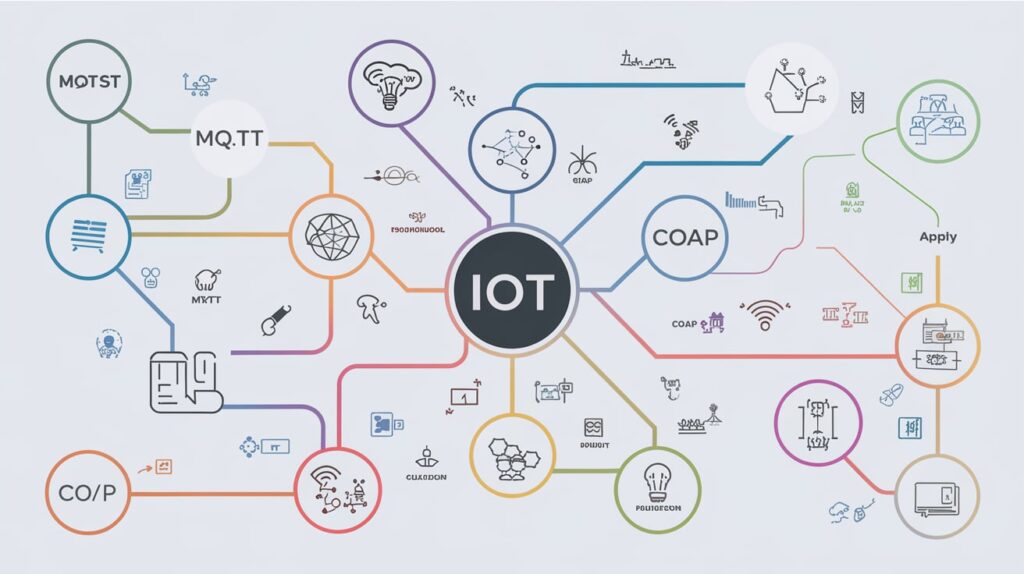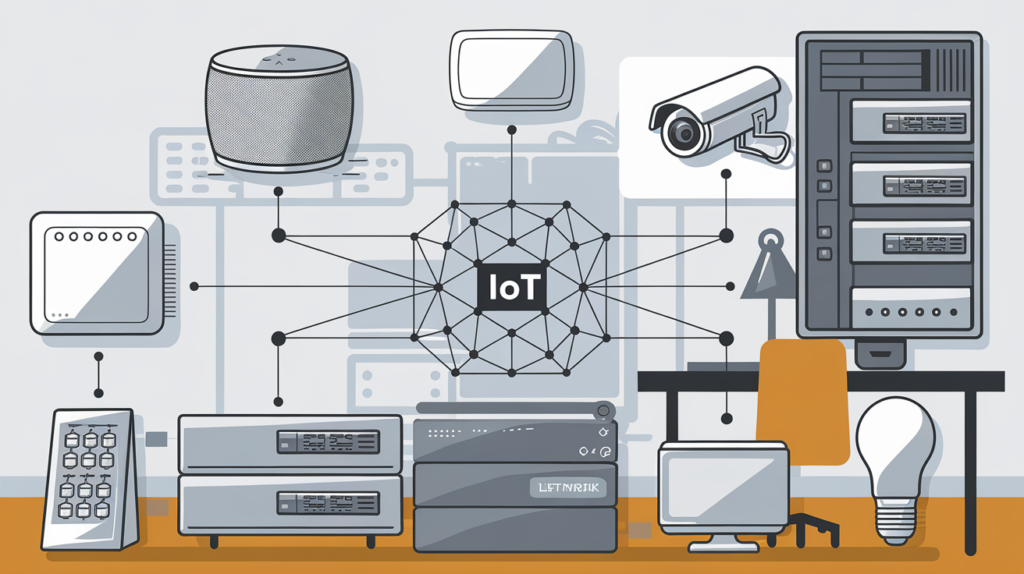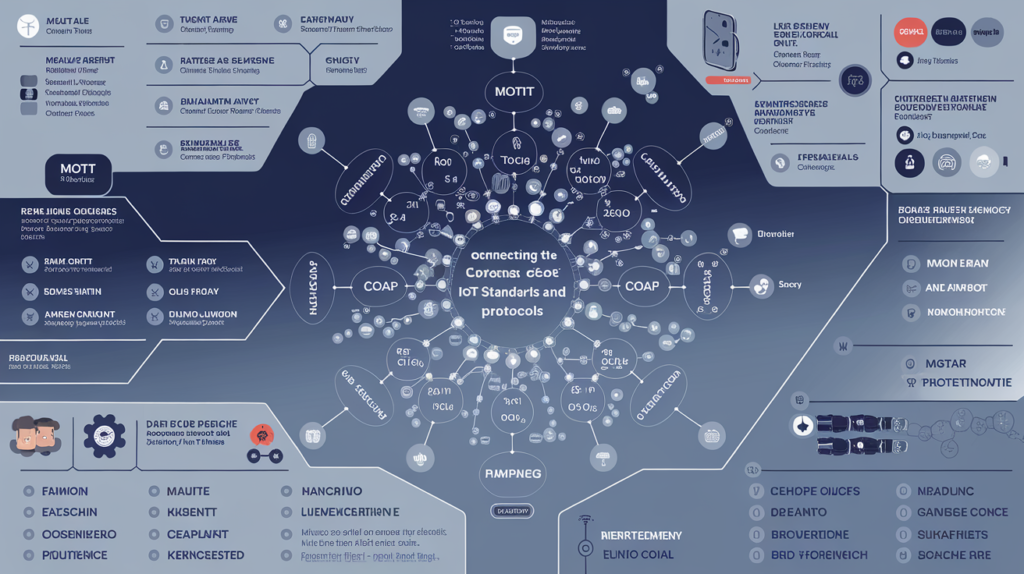The Internet of Things (IoT) is changing the way we interact with the world around us. From smart homes to industrial applications, the IoT creates a network of connected devices that constantly communicate with each other, collect data, and make decisions. But for this vast network to function seamlessly, there is a pressing need for standards and protocols. So, what exactly makes these IoT standards and protocols so crucial? How do they ensure interoperability, security, scalability, and foster innovation? Let’s dive deep into connecting the dots: unraveling IoT standards and protocols.
The Need for IoT Standards and Protocols
IoT devices are a part of nearly every aspect of modern life. However, the success of this digital ecosystem relies on a common language—standards and protocols. Without these, devices from different manufacturers could not effectively communicate, causing disruption in IoT ecosystems.
Interoperability
Interoperability is one of the most significant challenges in the IoT landscape. Different devices need to talk to each other. Standards ensure that regardless of the manufacturer or device type, communication between these devices remains smooth. Imagine a smart thermostat not syncing with your smartphone because they speak different “languages.” IoT standards are what enable these devices to be part of a larger interconnected network, ensuring that they work harmoniously together.
Security
IoT devices often collect sensitive data. From personal health information to financial transactions, the security of data is a top concern. Standardized security protocols ensure that information is encrypted and transmitted securely. Without a uniform approach to security, IoT devices would be susceptible to attacks and vulnerabilities, potentially exposing users to significant risks.
Scalability
With millions of new IoT devices being deployed daily, scalability becomes crucial. As the IoT grows, standards ensure that devices can scale efficiently without compromising performance. Whether you’re adding sensors to a factory floor or connecting smart lights to your home, these standards help manage the complexity of vast IoT networks.
Innovation
Standards don’t stifle innovation. Instead, they encourage it. When IoT developers follow common frameworks, they can focus on creating new, exciting applications rather than reinventing the wheel with each new device. By providing a foundation for innovation, IoT standards empower companies to push the boundaries of what’s possible, fostering the creation of new services and products.

Key IoT Standards and Protocols
IoT standards and protocols come in different forms. Let’s break them down into key categories: communication protocols, security protocols, data protocols, and device management protocols.
Communication Protocols
Communication is the backbone of IoT. Devices need to transmit and receive data seamlessly, and this is where communication protocols come into play. These protocols define how devices exchange information over a network.
- MQTT (Message Queuing Telemetry Transport): MQTT is a lightweight messaging protocol, ideal for low-bandwidth, high-latency environments. Its small footprint makes it a popular choice for remote sensors and devices.
- CoAP (Constrained Application Protocol): CoAP is designed for resource-constrained devices, making it well-suited for IoT applications where devices have limited computing power and memory.
- HTTP/HTTPS: These web protocols are used to enable communication between IoT devices and web servers, often for applications like smart home assistants or cloud-based services.
Security Protocols
Securing IoT networks and devices is paramount. The most commonly used security protocols include:
- TLS/SSL (Transport Layer Security / Secure Sockets Layer): These cryptographic protocols are widely used to encrypt data during transmission, preventing unauthorized access or interception.
- DTLS (Datagram Transport Layer Security): DTLS extends the security benefits of TLS to UDP-based communication, commonly used in real-time applications like IoT sensors or voice communication systems.
Data Protocols
Data protocols determine how data is formatted, structured, and interpreted across the IoT ecosystem. These protocols ensure data flows correctly from device to device, or from device to cloud, without data corruption.
Device Management Protocols
As IoT networks grow, managing devices remotely becomes crucial. Device management protocols allow administrators to configure, monitor, and update devices, ensuring that everything runs smoothly across a sprawling IoT ecosystem.
Challenges in IoT Standards and Protocols
Even with the progress made, IoT standardization is far from complete. Several challenges remain:
Fragmentation
The IoT landscape is still fragmented. Different industries use different protocols, and multiple standards can make it difficult for devices to communicate across sectors. This fragmentation leads to inefficiencies and compatibility issues between devices from different manufacturers.
Complexity
The sheer volume of IoT standards and protocols can be overwhelming. With new protocols emerging regularly, selecting the right ones for your application requires expertise and careful consideration. For developers, understanding which protocols are best suited for different use cases is critical.
Evolving Technology
IoT technology is constantly evolving, which makes it challenging to keep up with the changes. Standards need to be continuously updated to accommodate new technologies, including 5G, edge computing, and machine learning. This fast-paced evolution means that the standards of today may not be the standards of tomorrow.

The Future of IoT Standards
Despite these challenges, several organizations are working tirelessly to drive forward IoT standardization and help solve the problems mentioned above. These organizations include:
- IEEE (Institute of Electrical and Electronics Engineers): A leading standard-setting body for IoT.
- IETF (Internet Engineering Task Force): Responsible for creating and promoting Internet standards, including those for IoT.
- OneM2M: A global initiative focusing on Machine-to-Machine (M2M) communications and IoT.
- W3C (World Wide Web Consortium): Oversees the standards for web technologies, which often intersect with IoT applications.
Over time, we can expect to see more convergence among different standards. As organizations collaborate to develop harmonized protocols, the IoT ecosystem will become more unified and interoperable, enabling devices to communicate seamlessly across different sectors and technologies.
Also Read : TechOldNewz.in: The Top Site Offering the Latest Technological Updates of this New Era
Conclusion
In the rapidly evolving world of IoT, connecting the dots: unraveling IoT standards and protocols is a crucial step toward creating a truly interconnected world. Standards and protocols ensure that IoT devices can communicate efficiently, securely, and at scale. While challenges remain, the collaborative efforts of organizations around the globe are working to create a cohesive and reliable IoT ecosystem. As the IoT continues to grow, these standards will help unlock its full potential, enabling new applications and innovations that will change the way we live, work, and interact with the world around us.
By embracing these standards, the IoT can evolve into an integrated and intelligent network, where devices from all sectors communicate effortlessly and securely, creating a future that is as connected as it is smart.

